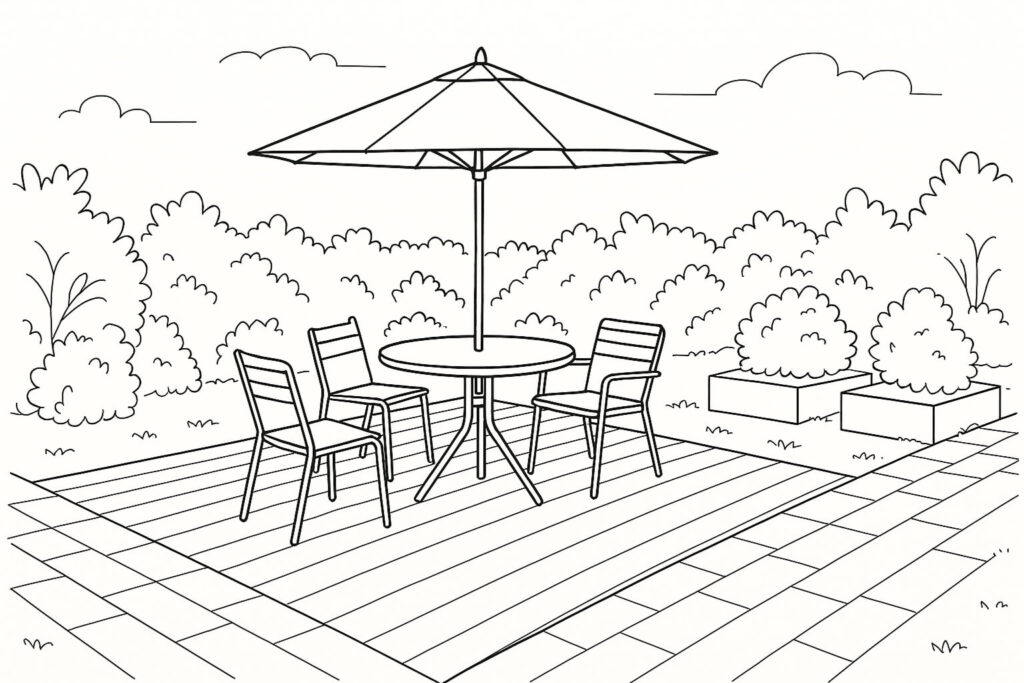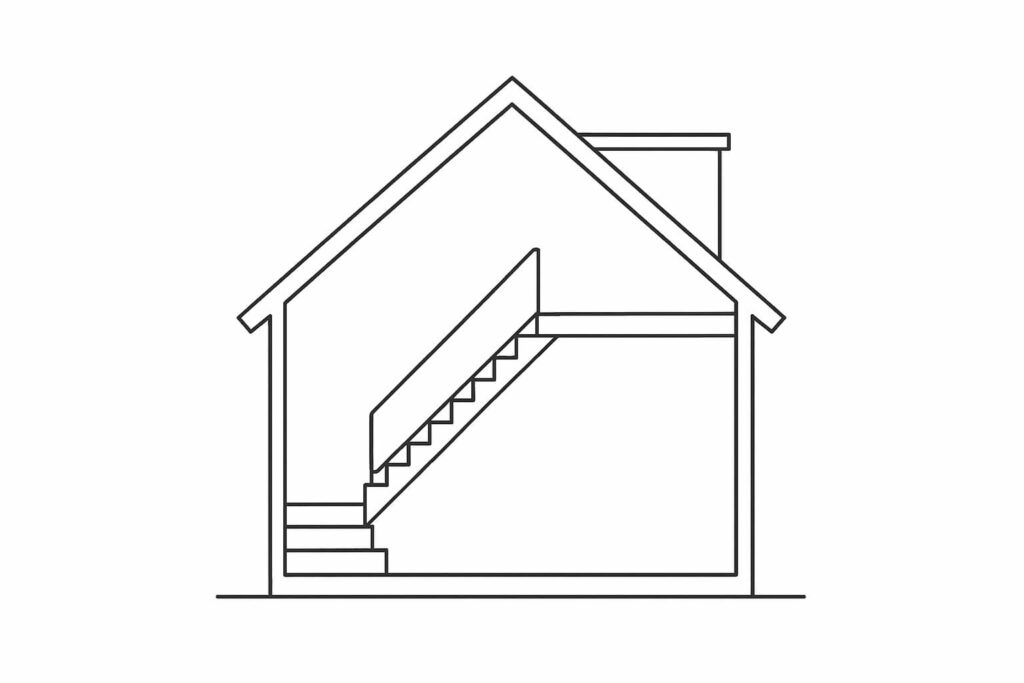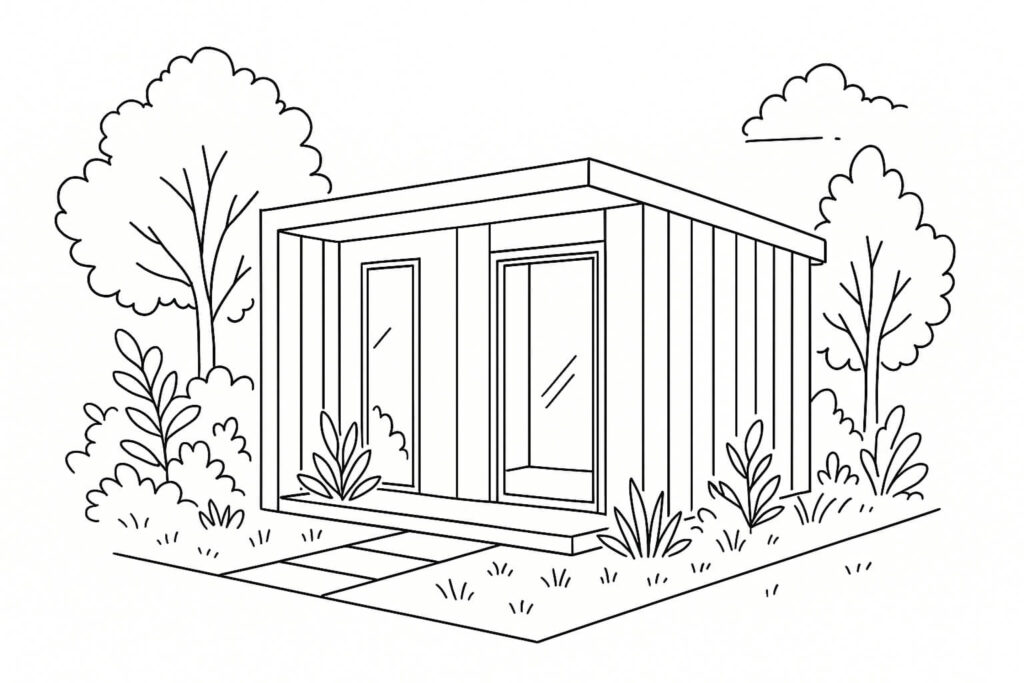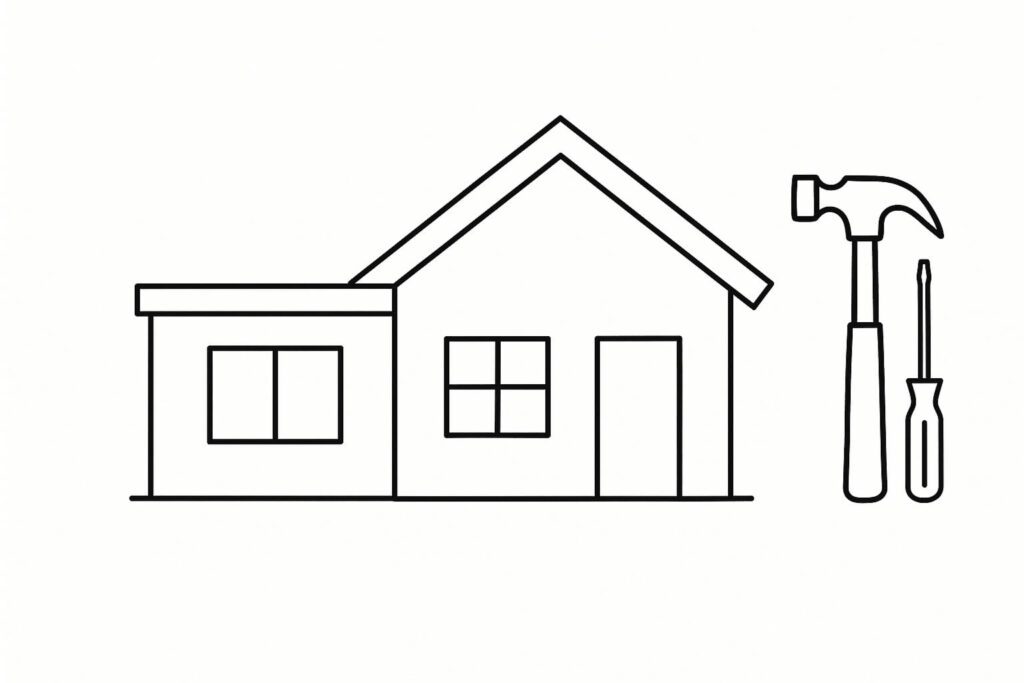Transform Your Outdoor Space: The Complete Guide to Decking, Patios, and Paving
Permalink: /outdoor-space-transformation-guide/
Your garden represents one of your home’s most valuable assets, yet many Cambridge homeowners struggle to maximise its potential throughout the year. The unpredictable British weather, muddy lawns during winter months, and the challenge of creating comfortable outdoor entertaining spaces can make gardens feel more like maintenance burdens than lifestyle enhancements. However, with thoughtful design and quality construction of decking, patios, and paved areas, your outdoor space can become a year-round extension of your home that adds both functionality and significant value to your property.
The transformation of outdoor spaces through well-designed hard landscaping has become increasingly sophisticated, moving far beyond basic concrete slabs or simple wooden decking. Today’s outdoor living areas can rival indoor spaces for comfort and style, incorporating features such as outdoor kitchens, integrated lighting systems, heating elements, and seamless connections to indoor living areas. Whether you’re working with a compact courtyard garden or an expansive lawn, the right combination of decking, patio, and paving solutions can create outdoor spaces that serve your lifestyle whilst enhancing your property’s appeal.
For Cambridge homeowners, the investment in quality outdoor living spaces proves particularly worthwhile given the premium placed on garden space in the local property market. Well-designed outdoor areas not only provide immediate lifestyle benefits but also contribute significantly to property values, often delivering returns that exceed the initial investment whilst providing years of enjoyment for your family.
Understanding Your Options: Decking, Patios, and Paving
The choice between decking, patios, and paving depends on numerous factors including your garden’s characteristics, intended use, aesthetic preferences, and budget considerations. Each option offers distinct advantages and can be combined effectively to create comprehensive outdoor living solutions that serve multiple functions.
Decking Solutions provide versatile platforms that can transform sloping or uneven ground into level, usable space. Modern decking materials range from traditional hardwoods through to innovative composite materials that combine the appearance of natural timber with enhanced durability and reduced maintenance requirements. Decking works particularly well for creating elevated entertaining areas, bridging different garden levels, or providing dry surfaces above potentially boggy ground.
The appeal of decking lies in its ability to create warm, natural-feeling surfaces that complement garden settings whilst providing practical benefits such as quick drainage and easy cleaning. Well-designed decking can incorporate features such as integrated lighting, built-in seating, and planters that blur the boundaries between hard landscaping and garden planting.
Patio Areas offer the ultimate in durability and low maintenance, creating permanent outdoor rooms that can withstand heavy use and extreme weather conditions. Natural stone patios provide timeless elegance that improves with age, whilst engineered stone products offer consistent appearance and performance characteristics. The thermal mass of stone patios helps moderate temperature fluctuations, creating comfortable microclimates that extend the usable season for outdoor activities.
Patio design has evolved to encompass sophisticated layouts that incorporate multiple materials, integrated water features, and seamless transitions between different functional areas. The key to successful patio design lies in selecting materials and layouts that complement your home’s architecture whilst creating spaces that serve your specific lifestyle requirements.
Paving Systems provide the foundation for comprehensive outdoor living areas, creating pathways, driveways, and functional surfaces that connect different garden areas whilst providing all-weather access. Modern paving materials offer extensive design possibilities, from traditional brick and stone through to contemporary concrete products that can mimic virtually any natural material.
The integration of different paving materials allows for creative design solutions that define different areas whilst maintaining visual coherence throughout the garden. Permeable paving systems address drainage concerns whilst contributing to sustainable water management, an increasingly important consideration for Cambridge homeowners.
Design Principles for Successful Outdoor Spaces
Creating outdoor spaces that function effectively throughout the year requires understanding design principles that address both practical requirements and aesthetic considerations. Successful outdoor living areas feel like natural extensions of indoor spaces whilst taking advantage of the unique opportunities that outdoor environments provide.
Zoning and Functionality involves creating distinct areas that serve different purposes whilst maintaining visual and physical connections throughout the space. This might include dining areas positioned for morning sun, lounging spaces that capture afternoon light, and activity areas that can accommodate children’s play or adult entertainment. The key lies in understanding how you want to use your outdoor space and designing areas that support these activities effectively.
Weather Protection extends the usability of outdoor spaces throughout Cambridge’s variable climate. This might involve positioning seating areas to take advantage of natural shelter, incorporating pergolas or canopies that provide protection from rain and excessive sun, or designing spaces that remain comfortable during windy conditions. The goal is to create outdoor areas that can be enjoyed in a wide range of weather conditions, not just on perfect summer days.
Privacy and Screening become increasingly important as outdoor living areas become more sophisticated and heavily used. Thoughtful screening can create intimate spaces that feel separate from neighbouring properties whilst maintaining openness to garden areas. This might involve strategic planting, architectural screens, or level changes that create visual separation without feeling enclosed.
Integration with Garden Design ensures that hard landscaping enhances rather than dominates garden spaces. The most successful outdoor living areas feel like natural parts of the garden, using materials and design approaches that complement existing features whilst creating new opportunities for planting and garden development.
The relationship between outdoor living areas and other garden features, such as garden rooms, creates opportunities for comprehensive outdoor environments that serve multiple functions throughout the day and seasons.
Material Selection: Balancing Aesthetics, Performance, and Budget
The choice of materials significantly affects both the immediate appearance and long-term performance of outdoor living spaces. Understanding the characteristics of different materials helps homeowners make informed decisions that balance aesthetic preferences with practical requirements and budget considerations.
Natural Stone Options provide unmatched beauty and longevity, improving with age and weathering to create surfaces that feel integrated with garden environments. Limestone, sandstone, and granite each offer distinct characteristics in terms of colour, texture, and performance. Natural stone requires higher initial investment but often proves economical over the long term due to its durability and timeless appeal.
The selection of natural stone should consider factors such as slip resistance, frost resistance, and compatibility with local architectural styles. Cambridge’s diverse architectural heritage means that different stone types may be more appropriate for different property styles and garden settings.
Engineered Stone Products combine the appearance of natural materials with consistent performance characteristics and often lower maintenance requirements. These products can provide excellent value whilst offering design flexibility that might not be achievable with natural materials. High-quality engineered products can be virtually indistinguishable from natural stone whilst offering advantages such as consistent sizing and colour matching.
Timber Decking Materials range from traditional hardwoods that provide natural beauty and longevity through to composite materials that combine recycled timber fibres with polymer binders. Hardwood decking requires regular maintenance but provides unmatched natural beauty, whilst composite materials offer consistent appearance and reduced maintenance at the cost of higher initial investment.
The choice between different timber options should consider factors such as maintenance requirements, slip resistance, and environmental considerations. Sustainably sourced hardwoods provide excellent performance whilst supporting responsible forestry practices.
Brick and Block Paving offers versatility and value, providing opportunities for creative patterns and designs that can complement both traditional and contemporary architectural styles. The modular nature of brick paving allows for complex layouts and easy repairs, whilst the wide range of available colours and textures provides extensive design possibilities.
Drainage and Technical Considerations
Successful outdoor living spaces require careful attention to technical details that ensure long-term performance and prevent problems such as water damage, frost damage, or structural movement. Understanding these technical requirements helps ensure that your investment provides lasting value and enjoyment.
Surface Drainage prevents water accumulation that can damage materials and create safety hazards. This involves designing appropriate falls and gradients that direct water away from buildings and seating areas whilst avoiding the creation of trip hazards or uncomfortable slopes. Effective drainage design is particularly important in Cambridge’s climate, where heavy rainfall can quickly overwhelm inadequate drainage systems.
Sub-Base Preparation provides the foundation for long-term performance, ensuring that surfaces remain level and stable despite ground movement and weather cycles. Proper preparation involves excavation to appropriate depths, installation of suitable sub-base materials, and compaction to specified standards. Cutting corners on sub-base preparation often leads to expensive remedial work later.
Permeable Solutions address both drainage requirements and environmental considerations, allowing rainwater to infiltrate naturally rather than contributing to surface water runoff. Permeable paving systems can significantly reduce the environmental impact of hard landscaping whilst providing practical benefits such as reduced puddle formation and improved surface grip.
Expansion and Movement Joints accommodate the thermal expansion and contraction that occurs with temperature changes, preventing cracking and damage that can compromise both appearance and performance. Understanding where and how to incorporate these joints ensures that surfaces remain attractive and functional over many years of use.
Integration with Landscape Design and Planting
The most successful outdoor living spaces integrate seamlessly with garden design and planting, creating environments that feel natural and balanced rather than dominated by hard surfaces. This integration involves careful consideration of how different elements work together to create cohesive outdoor environments.
Planting Integration softens hard edges and creates visual connections between different areas whilst providing seasonal interest and environmental benefits. Strategic planting can provide privacy, create microclimates, and enhance the overall appeal of outdoor living spaces. The key lies in selecting plants that complement the design whilst thriving in the specific conditions created by different materials and orientations.
Level Changes and Terracing create visual interest whilst addressing practical challenges such as sloping sites or the need to create distinct functional areas. Well-designed level changes can transform challenging sites into attractive, usable spaces whilst providing opportunities for creative planting and water features.
Water Features and Lighting enhance the appeal and usability of outdoor spaces whilst creating focal points that draw attention and create atmosphere. Integrated lighting extends the usable hours of outdoor spaces whilst providing safety and security benefits. Water features add movement and sound that enhance the sensory appeal of garden environments.
Seasonal Considerations ensure that outdoor spaces remain attractive and functional throughout the year, not just during peak summer months. This involves selecting materials and plants that provide year-round interest whilst designing spaces that can accommodate seasonal changes in use patterns and weather conditions.
Maintenance and Longevity Planning
Understanding maintenance requirements helps homeowners make informed decisions about materials and design approaches whilst ensuring that outdoor spaces continue to provide value and enjoyment over many years. Different materials and design approaches have varying maintenance requirements that should be considered alongside initial costs and aesthetic preferences.
Preventive Maintenance programmes help preserve the appearance and performance of outdoor surfaces whilst preventing minor issues from developing into expensive problems. This might involve regular cleaning, resealing of certain materials, or seasonal inspections that identify potential issues early.
Material-Specific Requirements vary significantly between different options, from the regular oiling required for some timber decking through to the occasional cleaning that maintains the appearance of stone surfaces. Understanding these requirements helps homeowners select materials that match their preferences for ongoing maintenance involvement.
Seasonal Preparation ensures that outdoor spaces remain safe and attractive throughout Cambridge’s variable climate. This might involve winter protection for certain materials, spring cleaning and preparation routines, or autumn maintenance that prepares surfaces for winter weather.
Long-Term Performance considerations help ensure that initial investments continue to provide value over many years. This involves selecting quality materials and construction methods that will age gracefully whilst designing spaces that can adapt to changing needs and preferences.
Cost Considerations and Value Addition
Understanding the financial aspects of outdoor space improvements helps homeowners make informed decisions about timing, specifications, and financing options. Well-designed outdoor living spaces represent significant investments that can add substantial value to properties whilst providing immediate lifestyle benefits.
Initial Investment Planning should consider both immediate costs and long-term value, balancing initial budget constraints with the desire for quality results that will provide lasting satisfaction. Understanding what drives costs helps homeowners prioritise spending on elements that provide the greatest value and impact.
Value Addition Studies consistently show that well-designed outdoor living spaces add significant value to properties, often exceeding the initial investment cost. This value addition stems from both the additional functional space and the enhanced lifestyle appeal that quality outdoor areas provide.
Phased Implementation allows homeowners to spread costs over time whilst ensuring that each phase contributes to a coherent overall vision. This approach is particularly valuable for larger projects where the full scope might exceed immediate budget availability.
Return on Investment calculations should consider both financial returns and lifestyle benefits, recognising that outdoor living spaces provide immediate enjoyment whilst contributing to long-term property values.
Integration with Comprehensive Home Improvement Strategies
Outdoor living improvements often work best as part of comprehensive property enhancement strategies that consider both indoor and outdoor spaces. Understanding how different improvements complement each other helps maximise both functionality and value whilst potentially reducing overall costs through coordinated planning and construction.
Indoor-Outdoor Connections create seamless transitions that extend living spaces into garden areas whilst bringing natural light and garden views into indoor spaces. This might involve coordinating outdoor paving with indoor flooring materials, aligning door and window openings with outdoor sight lines, or designing outdoor areas that complement indoor colour schemes and design themes.
Comprehensive Planning that considers multiple improvements simultaneously often results in better overall outcomes whilst potentially reducing costs through coordinated construction activities. For example, combining outdoor living improvements with house extensions or garden room projects can create comprehensive outdoor environments that serve multiple functions.
Future Flexibility ensures that current improvements don’t preclude beneficial future developments whilst creating foundations that can support additional enhancements. This might involve installing services that can support future lighting or water features, or designing layouts that can accommodate future extensions or modifications.
Conclusion
Transforming your outdoor space through quality decking, patio, and paving improvements represents one of the most rewarding investments you can make in your Cambridge home. Whether you’re creating intimate dining areas, expansive entertainment spaces, or simply improving access and usability throughout your garden, well-designed outdoor living areas enhance both your lifestyle and your property’s value.
The key to success lies in understanding your specific requirements, site conditions, and long-term objectives whilst working with experienced professionals who can translate your vision into reality. Quality materials, thoughtful design, and expert construction ensure that your outdoor improvements provide lasting value and enjoyment whilst requiring minimal ongoing maintenance.
As you consider your options, remember that outdoor living improvements often work best as part of comprehensive property enhancement strategies. Whether combined with planning permission applications for larger projects, house renovation programmes, or the creation of garden rooms that complement outdoor living areas, thoughtful planning can create outdoor environments that truly transform your relationship with your garden.
Your outdoor space has the potential to become one of your home’s most valuable and enjoyable areas. With professional guidance and quality construction, you can create outdoor living areas that provide year-round enjoyment whilst adding lasting value to your Cambridge property.






